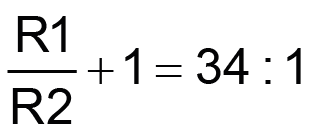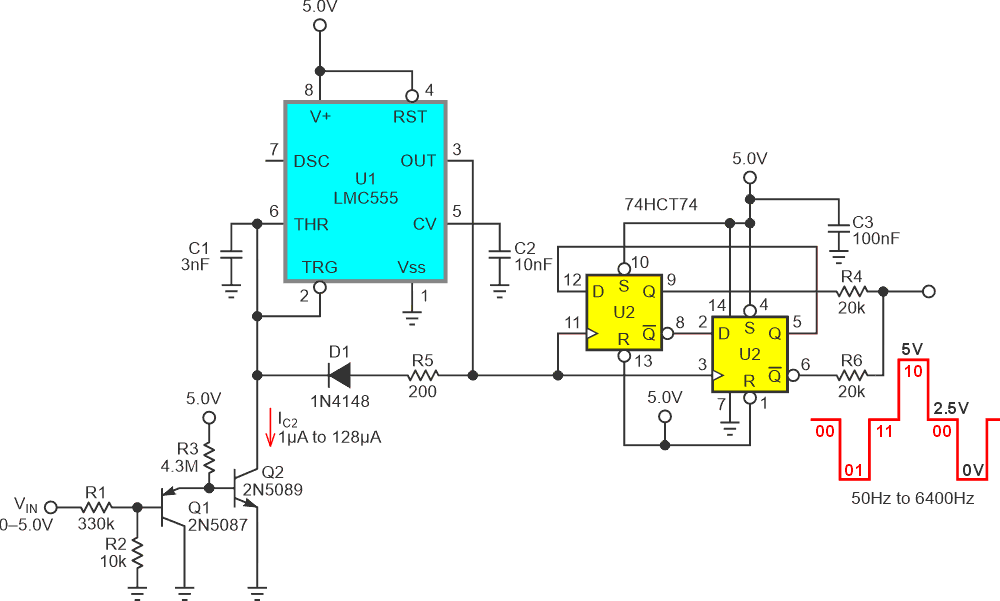Frequent contributor Nick Cornford recently shared design ideas incorporating cool circuits for linear-in-pitch voltage-controlled oscillators (LPVCOs):
- Revealing the infrasonic underworld cheaply: Part 1 (Ref. 1) and Part 2 (Ref. 2)
- A pitch-linear VCO: Part 1 (Ref. 3) and Part 2 (Ref. 4)
The linear in pitch function, which makes output frequency proportional to the antilog of voltage, is interesting because it provides a better perceptual interface to the inherently logarithmic human ear than a linear frequency.
One measure of the performance of an LPVCO is its octave range. That’s the ratio of highest to lowest frequency that its output spans, expressed as the binary (base 2) logarithm of the ratio. Two octaves (22 = 4:1) is good. Three octaves (23 = 8:1) is better. The LPVCO in Figure 1 does seven (27 = 128:1).
Here’s how it works.
Control voltage VIN is scaled by a voltage divider

and applied to the Q1 Q2 exponential-gain current mirror. There, it is level-shifted and temperature-compensated by Q1, then anti-logged by Q2 to produce

The resulting C1 timing ramp spans from 5 ms (for VIN = 0) to 40 µs (for VIN = 5 V). The ramp ends when it crosses analog timer U1’s 1.67-V trigger level and is reset via R5 and D1 to U1’s threshold level of 3.33 V, starting another oscillation cycle. The resulting sawtooth will therefore repeat at

Nick’s lovely designs show that short pulses such as U1’s output spikes require conversion to a waveshape with a less intense harmonic content if we want to hear a listenable audio output. Therefore, U2’s switch-tail counter divides U1’s oscillation frequency by 4. This produces a hardly sinusoidal, but at least somewhat less annoying, tri-level 50 Hz to 6400 Hz final output.
References
- Cornford, Nick. "Revealing the infrasonic underworld cheaply, Part 1."
- Cornford, Nick. "Revealing the infrasonic underworld cheaply, Part 2."
- Cornford, Nick. "A pitch-linear VCO, part 1: Getting it going,"
- Cornford, Nick. "A pitch-linear VCO, part 2: taking it further,"
